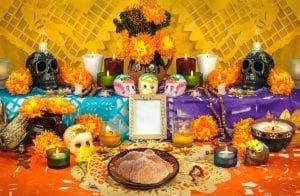Mexican American Funeral Service Rituals

Since the earliest stages of Mexican culture, Mexicans have embraced death as a part of life. In most cases, Mexican American Funeral rituals reflect this belief.
The Mayans and Aztecs were both warriors who practiced human sacrifice — which shows a casual acceptance of death. Combine this ancient belief with the Catholicism that missionaries brought to their country, and funeral attendees will see a relaxed yet deeply religious regard for death.
This acceptance of death has defined some modern Mexican rituals, such as “The Day of the Dead,” a celebration that honors those who are deceased. In celebration, many Mexicans decorate with skeletons that dance and play instruments.
Although other cultures may regard this as irreverent, it is not meant to trivialize the loss of a loved one but rather affirm their belief in an afterlife — and ease grief.
Most Mexican Americans are Catholic and consider the funeral an important part of life. Services are heavily attended and led by Catholic priests who honor the recently departed. In rural communities, the wake is usually held at the family’s home, where loved ones come to strengthen ties and pay respects to the deceased. In rural areas, the coffin is placed on a table or stands under burning candles and herbs. The viewing will likely be held in a mortuary in an urban setting. A church ceremony follows the wake.
Attendees can expect:
- Strong emotional responses to be encouraged.
- Children who are socialized at a young age to accept death.
- A final ceremony is to be held at the burial site.
- Relatives throw a handful of dirt on the coffin before the grave is filled.
- Family members to bring candles to church and light them at the altar for nine days following the death.
Although Mexican Americans embrace death, it is important for them to say goodbye to loved ones with elaborate funerals and long periods of mourning.

